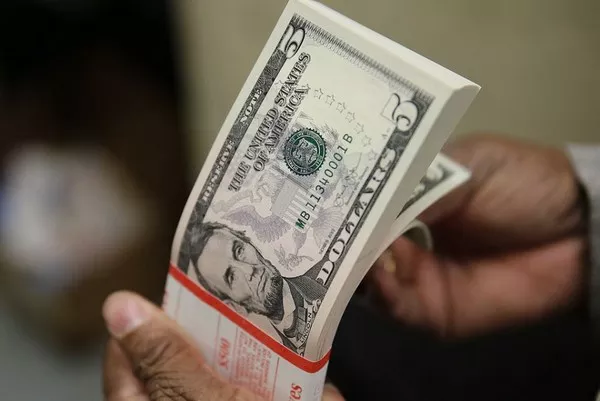The exchange rate between the Indian Rupee (INR) and the US Dollar (USD) is a critical indicator of a nation’s economic health. In recent times, observers have noted a steady depreciation of the Indian Rupee against the US Dollar, sparking concerns and discussions about the factors contributing to this trend. This article aims to delve into the multifaceted reasons behind the falling value of the Indian Rupee against the US Dollar, exploring both domestic and international factors.
Current Account Deficit (CAD):
One primary factor contributing to the depreciation of the Indian Rupee is the widening Current Account Deficit. The Current Account reflects the net trade balance, including the export and import of goods and services, as well as net income from abroad. When a country’s imports surpass its exports, leading to a deficit, it puts pressure on the domestic currency. India has been grappling with a persistent CAD, largely fueled by increased oil prices, rising imports, and subdued export growth.
The dependence on oil imports is a significant contributor to India’s trade deficit. Fluctuations in global oil prices directly impact the import bill, impacting the Rupee’s value. As oil prices rise, India’s trade deficit widens, leading to increased demand for foreign currency and subsequently depreciating the Rupee against the US Dollar.
Inflation Differentials:
Inflation differentials between India and the United States play a crucial role in determining exchange rates. If inflation in India is higher than in the US, it erodes the purchasing power of the Rupee, making Indian goods more expensive relative to those from the US. This, in turn, affects the balance of trade and contributes to the depreciation of the Rupee.
India has faced persistent inflationary pressures in recent years, driven by factors such as food price volatility, supply chain disruptions, and structural issues. The Reserve Bank of India (RBI) has been striving to maintain a delicate balance between controlling inflation and supporting economic growth, but these efforts often come with trade-offs that impact the exchange rate.
Fiscal Deficit and Government Policies:
The fiscal health of a nation has a direct bearing on its currency’s value. India has been grappling with a substantial fiscal deficit, largely attributed to increased government spending, subsidies, and social welfare programs. While such measures are essential for economic development, they also put pressure on the government’s finances, leading to increased borrowing.
A higher fiscal deficit often necessitates increased government borrowing, which in turn raises concerns about the government’s ability to service its debt. Investors and foreign exchange markets closely monitor these developments, and uncertainty about fiscal discipline can lead to a depreciation of the Rupee.
Government policies also play a crucial role. Any lack of clarity or inconsistency in economic policies can create uncertainty among investors, leading to capital outflows and a depreciation of the domestic currency. The Indian government’s management of economic policies, including reforms aimed at improving the investment climate, is instrumental in determining the Rupee’s value.
External Debt:
The level of external debt a country carries can impact its exchange rate dynamics. India’s external debt has been on the rise, driven by factors such as increased borrowing for infrastructure projects and the financing of trade deficits. While external debt itself is not necessarily a problem, the ability to service this debt becomes crucial.
If a country faces challenges in repaying its external debt, it can lead to a loss of investor confidence and a sell-off of the domestic currency. India’s rising external debt, coupled with concerns about its sustainability, can contribute to the depreciation of the Rupee against the US Dollar.
Global Economic Conditions and Dollar Strength:
The value of the US Dollar on the global stage also plays a pivotal role in determining exchange rates. The US Dollar often serves as a safe-haven currency, attracting global investors during times of economic uncertainty. Factors such as changes in US interest rates, economic growth, and geopolitical events can influence the strength of the Dollar.
During periods of global economic uncertainty, investors may seek refuge in the US Dollar, leading to increased demand and, consequently, a depreciation of other currencies, including the Indian Rupee. The Federal Reserve’s monetary policy decisions and their impact on interest rate differentials between the US and other economies can significantly influence currency movements.
See Also How Much Money Is A Two Dollar Bill Worth
Conclusion:
The depreciation of the Indian Rupee against the US Dollar is a complex phenomenon influenced by a myriad of factors, both domestic and international. Addressing this issue requires a comprehensive and coordinated approach that encompasses fiscal discipline, monetary policy effectiveness, trade promotion, and structural reforms.
India’s policymakers must focus on reducing the Current Account Deficit through measures such as diversifying exports, promoting import substitution industries, and managing oil price volatility. Additionally, maintaining a stable inflation environment, implementing prudent fiscal policies, and addressing structural issues can contribute to restoring investor confidence and stabilizing the Rupee.
In an interconnected global economy, external factors cannot be ignored. Collaborative efforts with other nations to address global economic challenges, coupled with strategic reforms to enhance India’s competitiveness, are essential for mitigating the depreciation of the Rupee. By adopting a holistic and proactive approach, India can navigate the challenges and work towards ensuring the stability and strength of its currency in the international arena.


